|
This French/Japanese fusion restaurant opened five years ago in Aoyama, headed up by chef Hiroyasu Kawate. In March 2015 it moved to the basement of an office building in Shibuya. The seats are arrayed around a central kitchen, the seating elevated slightly so that all diners can see into the kitchen clearly. There were fifteen diners sitting around the kitchen, plus more in a private dining room to one side. Mr Hiroyasu previously trained at Le Bourguignon and worked at Quintessence as sous chef. He grew up surrounded by family members who were chefs so cooking was always a part of his life. His parents had a western style restaurant and whilst they didn't teach him to be a cook he spent much of his childhood in the kitchen. Becoming a French chef was a decision he made in high school - his father was trained in western cuisine, his brother in Chinese cooking and his cousin was a sushi chef. Speciality dishes of the restarant include a hazelnut meringue and foie gras, and Mr Kawate likes to play with texture and temperature. The wine list was mostly French, though there was also a page of Japanese wines. Examples included Chateau Gruaud Larose 2002 at ¥15,000 for a bottle that can be found for around ¥8,500 in the high street, Chateau Cos d'Estornel 1993 at ¥25,000 compared to a retail price of ¥15,076 and at ¥45,000 for a bottle that will set you back ¥32,086 in a shop. We drank Etienne Sauzet Puligny Montrachet Les Perrieres 2010, which was priced at a bargain ¥21,000 compared to a current market price of around ¥15,160. The meal began with an unusual presentation of a pile of smoking ash, actually made from Japanese tealeaves. Inside this were a pair of smoky baked sweet potatoes that could be pulled out, as if from amongst leaves in a forest. A sweet potato purée was enclosed in a potato gnocchi. This was very enjoyable, not overly smoked, with a pleasingly sweet flavour (16/20). This was bavarois of fromage blanc with grey mullet roe, fermented bottarga, raw turnip salad and yuzu with a little burdock flower. This was unusual and a effective combination, the yuzu providing some freshness to the dish (17/20). At this stage a loaf of steamed bread appeared; this was pleasant though I prefer regular bread to the doughy texture of steamed bread. Ayu (sweet fish) was sautéed and served with a fish liver sauce, along with brown rice risotto with two different wild mushrooms (maitake and another I did not recognise), and a garnish of crisp fried fish bones. The risotto was good and the crisp fish bones were better than they sound, though the ayu itself was not the very best specimen that I have tried in Japan (16/20). Beef carpaccio was from a 30 year old cow from Miyazaki, served with beetroot purée, smoked potato purée and a sorbet of red apple. The meat was very tender and had a full beefy flavour (some ultra marbled Japanese beef can be so buttery that it barely tastes of the animal), the beetroot purée going well and the apple cutting though the richness (17/20). As a pescatarian alternative, bonito was served with smoked potato purée, salted meringue and coffee sauce. This was lovely, the fish tender, the note of coffee interesting but not dominant (17/20). Next was a prawn from Hagoshima with smoked aubergine, prawn consommé, rose wine sauce with ginger, rice cracker with prawn flavour and slow cooked aubergine. The prawn was excellent, sweet and delicious, and the aubergine was good though the prawn crisp did not entirely live up its description (16/20). This was followed by a consommé of maitake and chanamatake mushrooms with cod milt and plum sauce. Cod milt is something of an acquired taste, but the mushrooms were good and the plum sauce fine (14/20). The final savoury course was guinea fowl, the whole bird displayed at the table and then dismembered in the kitchen for serving. It was served with paprika sauce and a piperade, along with Okinawan salt. The guinea fowl had excellent flavour, the meat working nicely with the paprika (17/20). As a pescatarian alternative there was mackerel with yuzu purée, peanuts and wild rice stem. This fish had superb flavour, the acidity of the yuzu a logical paring (17/20). A pre-dessert of persimmon came with toasted almonds. The persimmon came in a quartet of forms: raw, jelly, juice and sorbet, and while the fruit itself could have been sweeter the almonds had dazzling flavour (17/20). Brown sugar soft waffle came with creamy apricot sea espuma with black fig skin. The waffle was fine but the fig was a bit leathery (14/20). Finally a chestnut soufflé was served with more chestnut in the form of ice cream and also powder, the textures working well together and with deep chestnut flavour (17/20). Guatemalan coffee was made from scratch, including the beans being ground to order, and was accompanied by a pair of little brown cherries from Nagana coated in rich apricot purée. Fruit in Japan can often be dazzling, and the flavour of the cherries and apricot was remarkable (19/20). Service was superb, our waitress friendly, patient and capable. The bill came to ¥57.140 for two including the excellent wine, which works out at £155 per person, though the menu itself was just ¥11,500 (£62) per person, so if you ordered a modest wine then a more representative cost per head would be £90. Overall this was a very impressive meal, innovative without being overly wacky, the ingredient quality excellent, the kitchen technique generally very good. This is an excellent example of modern Japanese cooking.
|

-
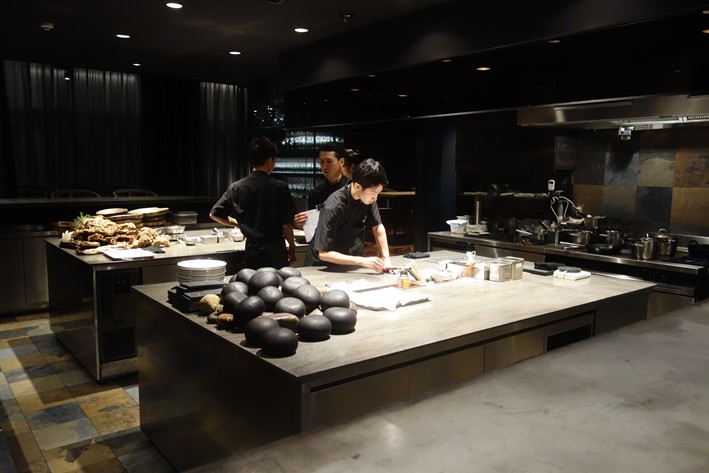 open kitchen
open kitchen

-
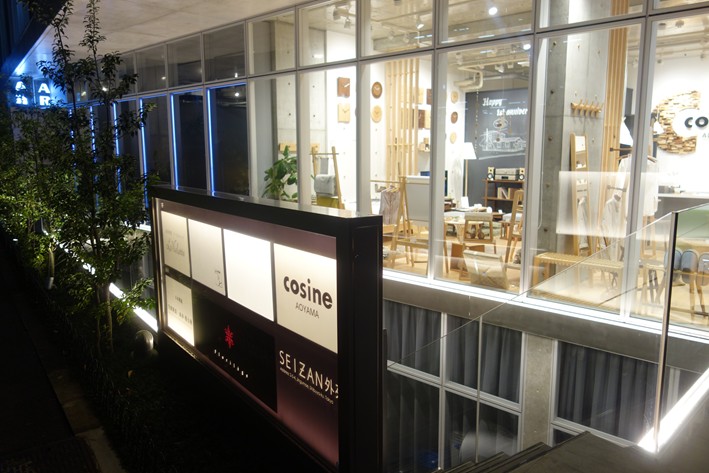 outside
outside

-
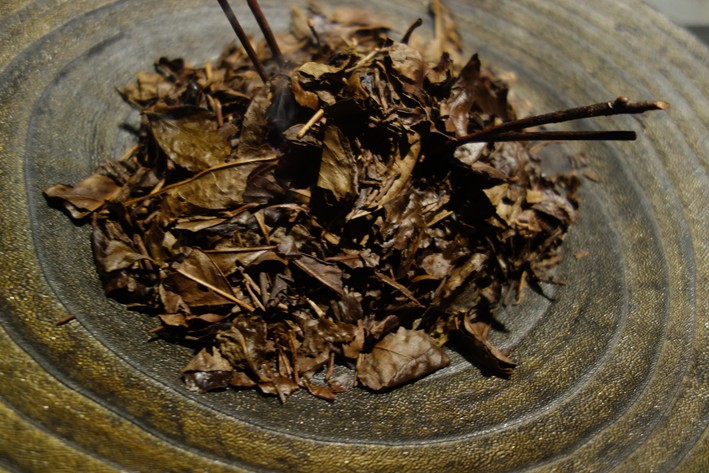 leaves of tea concealing sweet potato
leaves of tea concealing sweet potato

-
 baked sweet potato
baked sweet potato

-
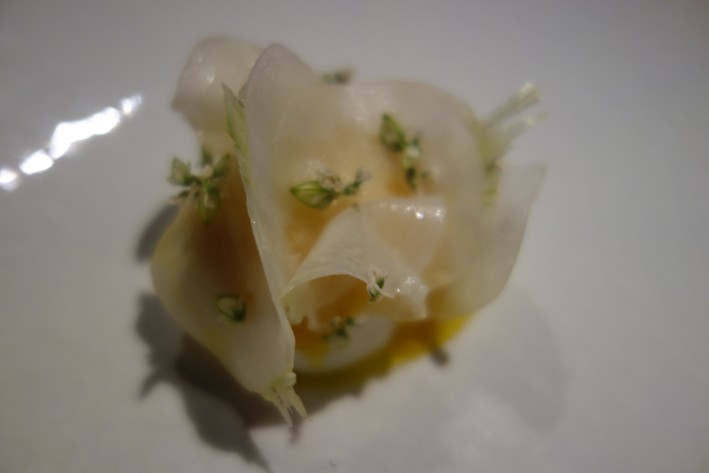 turnip salad and fromage blanc
turnip salad and fromage blanc

-
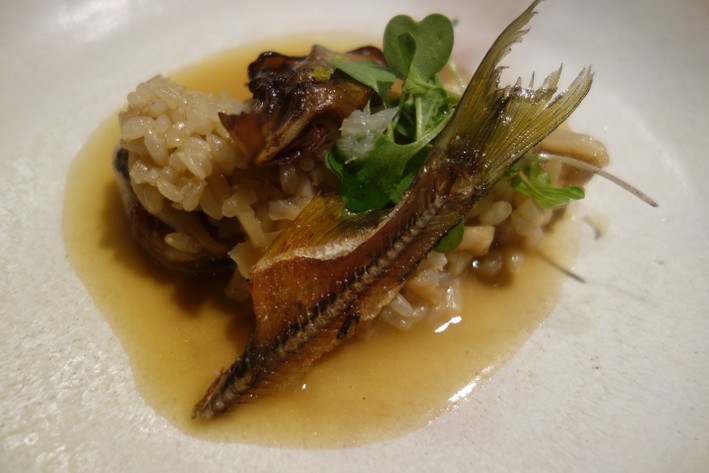 ayu
ayu

-
 beef carpaccio
beef carpaccio

-
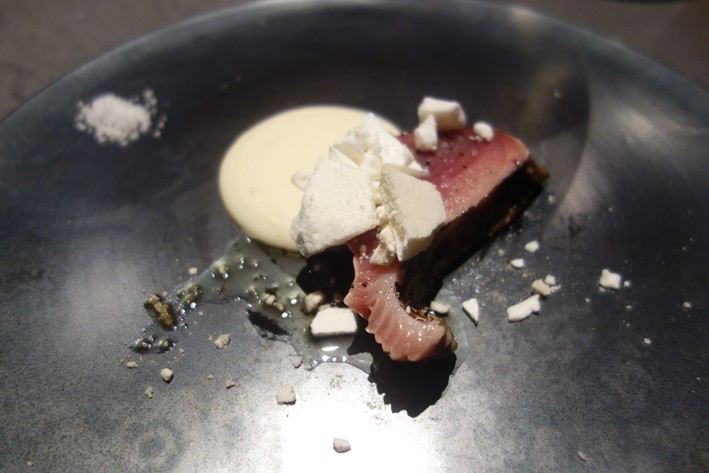 bonito with smoked potato
bonito with smoked potato

-
 prawn with aubergine
prawn with aubergine

-
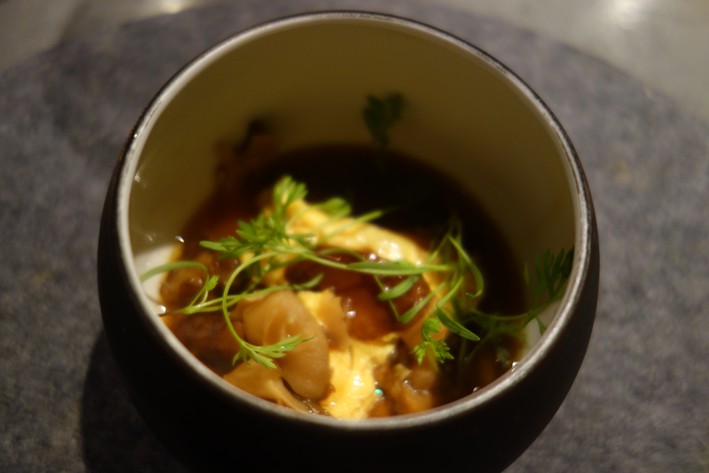 mushroom consomme with shirako
mushroom consomme with shirako

-
 guinea fowl
guinea fowl

-
 guinea fowl served
guinea fowl served

-
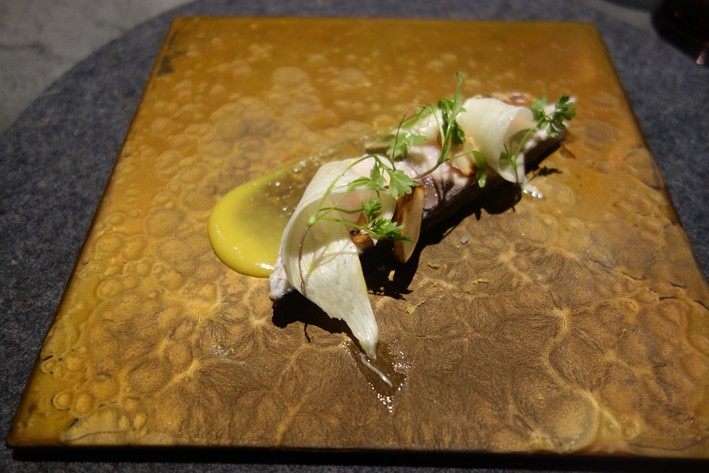 mackerel
mackerel

-
 fruit cocktail
fruit cocktail

-
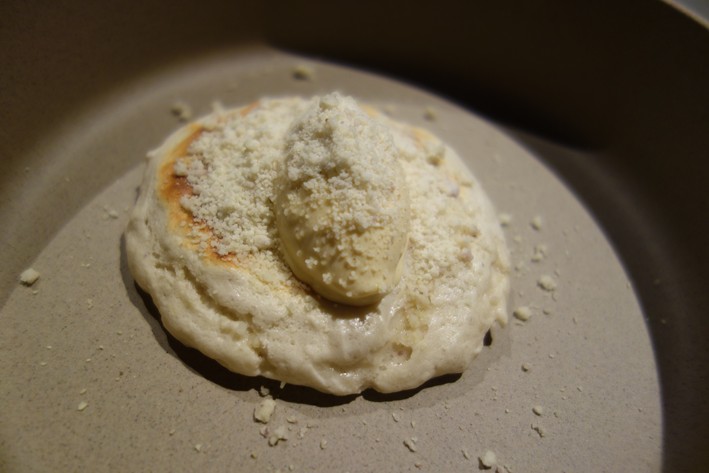 coffee souffle
coffee souffle

-
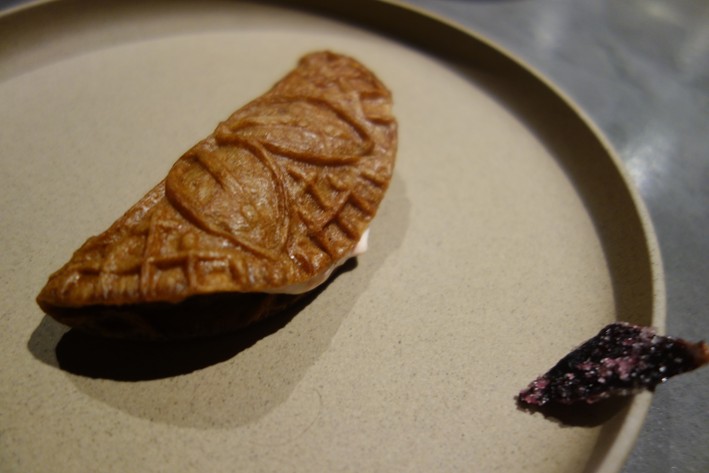 waffle
waffle

-
 cherries in apricot puree
cherries in apricot puree

-
 Chef and owner Hiroyasu Kawate
Chef and owner Hiroyasu Kawate

Japanese cuisine
 Average Price £90
Price I paid £155
Value for money
£££££
Overall rating 17/20
Michelin star
Average Price £90
Price I paid £155
Value for money
£££££
Overall rating 17/20
Michelin star

The type of cuisine served at this restaurant
Typical price for three courses and modest wine
What I actually paid on this particular visit
Calculated from overall rating/average price: £££££ is best, £ least good
Score for the food from 1 to 20, with 20 being world class
Currently has at least one Michelin star



















Add a comment
Thank you for submitting your comment, this will be checked and added to the website very soon.
User comments